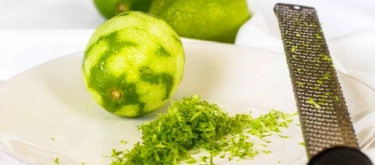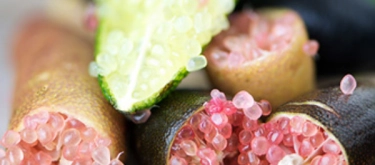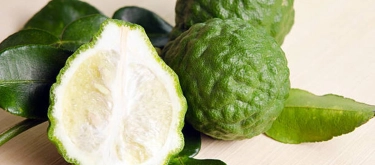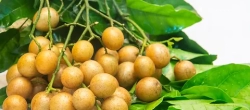Lime: Taste Profile, Aroma, Benefits and Health Risks
Lime (Citrus aurantiifolia and Citrus latifolia) is a small, vibrant citrus fruit celebrated globally for its intensely aromatic zest, bold acidity, and culinary versatility. Originating from Southeast Asia, limes have become essential in various cuisines, especially in Mexican, Southeast Asian, Indian, Middle Eastern, and Caribbean dishes. Their sharp acidity, invigorating fragrance, and freshness make them ideal for beverages, desserts, marinades, sauces, and savory culinary creations.
Limes are suitable for vegetarians, vegans, and gluten-free diets. However, some individuals may have citrus allergies or sensitivities and should avoid limes. The high acidity may also irritate gastrointestinal issues, such as acid reflux or stomach ulcers, so consumption should be moderate if sensitive.
What does Lime taste like?

Complete Sensory Description
Taste
Lime is characterized by its distinctly sharp, vibrant acidity, accompanied by a refreshing, moderately bitter undertone. The dominant flavor is an invigorating tartness, more pronounced than that of lemons, balanced slightly by subtle sweetness. Beyond the acidity, limes carry complex aromatic notes, including floral, herbaceous, and mildly spicy nuances, offering a multi-layered flavor profile. Lime zest, rich in essential oils, presents concentrated citrus intensity and gentle bitterness, enhancing the depth of flavor in culinary applications.
Aroma
Limes possess an intensely fresh, bright, and uplifting aroma dominated by citrus essential oils, primarily limonene and citral, delivering strong lemon-lime notes. Aromatic layers also reveal floral and herbal hints, refreshing and invigorating, becoming especially pronounced when zesting or slicing fresh limes, releasing fragrant essential oils into the surrounding environment.
Texture
The texture of lime flesh is juicy yet slightly firm, with smaller juice vesicles compared to oranges or lemons. Each segment provides an immediate burst of tart juice, crisp and refreshing. Lime zest offers a contrasting texture—firm, slightly oily, with mildly abrasive characteristics perfect for culinary garnishes or flavor infusions.
Appearance
Limes feature glossy, smooth, and bright green skin (turning slightly yellowish when fully mature), thin but firm enough for zesting. The interior flesh is pale greenish-yellow, segmented and juicy, visually appealing both sliced and whole, ideal for garnishes and culinary presentations.
In-depth Flavor Analysis
Lime’s distinctive taste arises from the interplay between organic acids, sugars, aromatic terpenes, and flavonoids within the fruit. Citric acid is primarily responsible for lime’s sharp acidity and pronounced tartness, contributing significantly to its invigorating flavor and mouth-puckering effect. The acidity level is typically higher in limes than lemons, providing a more intense citrus experience.
Lime’s subtle sweetness originates from small quantities of fructose and sucrose, balancing but not diminishing the overall tartness. Bitterness, primarily found in the zest or peel, is derived from flavonoid glycosides, compounds that lend complexity and slight astringency.
Aromatic compounds in lime, particularly limonene, citral, and linalool, strongly influence its unique flavor profile. These volatile essential oils contribute floral, herbaceous, and faintly spicy nuances, adding considerable aromatic depth, especially noticeable when using zest.
Environmental factors, such as climate and soil, significantly influence lime flavor variations. Limes grown in hot, humid conditions tend to have higher acidity, aromatic intensity, and concentrated essential oils, whereas cooler climates can produce slightly sweeter, milder flavors.
Varieties and Culinary Applications
Key Lime (Citrus aurantiifolia)
- Small, intensely acidic with floral notes; iconic in key lime pie, desserts, cocktails, and marinades.
- Preferred for vibrant flavor in beverages, sweets, and seafood dishes.
Persian Lime (Citrus latifolia)
- Larger, slightly milder acidity, widely available; popular for juices, beverages, marinades, dressings, or garnishes.
- Commonly used in everyday culinary practices worldwide.
Kaffir Lime (Citrus hystrix)
- Primarily valued for aromatic leaves and zest rather than juice; extensively used in Thai, Indonesian, and Malaysian cuisines for curries, soups, and spice pastes.
Culinary Versatility
Lime’s intense acidity and aromatic complexity are ideal for:
- Beverages: Limeade, cocktails (mojitos, margaritas), sodas, teas, and infusions.
- Sauces and Marinades: Ceviche, vinaigrettes, salsas, curries, and marinades for meat and seafood.
- Desserts: Key lime pie, sorbets, cakes, puddings, and creams.
- Savory Dishes: Enhancing seafood, grilled meats, Asian stir-fries, and salads.
- Zest Applications: Garnishing, flavoring cakes, pastries, cocktails, and savory dishes.
Selection and Storage
Selecting Quality Limes
- Choose firm, brightly colored, smooth-skinned limes, heavy for their size, indicating juiciness.
- Avoid fruits with wrinkled skin, brown spots, dryness, or excessive softness.
Storage Recommendations
- Store limes at room temperature for up to one week or refrigerate (4–8°C / 39–46°F) for 3–4 weeks, maintaining freshness and juiciness.
- To maximize juice extraction, store briefly at room temperature or roll before juicing.
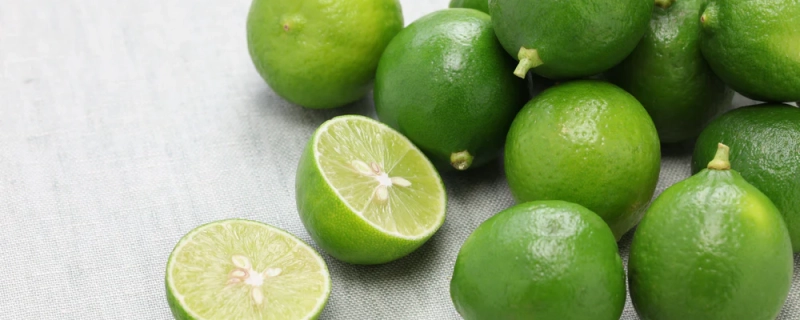
Nutritional Insights
-
Vitamin C (Ascorbic Acid):
Excellent source of vitamin C, supporting immune function, antioxidant protection, collagen synthesis, and overall health. -
Dietary Fiber and Flavonoids:
Contains dietary fiber beneficial for digestive health; flavonoids with antioxidant and anti-inflammatory properties. -
Minerals:
Provides small yet valuable amounts of potassium, magnesium, and calcium, essential for cardiovascular health, electrolyte balance, and bone strength. -
Low-Calorie, High Flavor:
Low-calorie citrus ideal for flavor enhancement without calorie excess, beneficial in balanced and weight-conscious diets.
Expert Insights & Culinary Tips
-
Flavor Pairings:
Pair lime exceptionally well with herbs (mint, cilantro, basil), seafood, chicken, coconut milk, chili, avocado, ginger, garlic, soy sauce, and tropical fruits (pineapple, mango). -
Balancing Acidity:
Use sweeteners (honey, sugar, agave), creamy ingredients (coconut milk, yogurt), or oils (olive oil, avocado oil) to balance intense tartness, enhancing culinary harmony. -
Zest Usage:
Zest carefully to avoid bitterness from the white pith; add zest to dishes or drinks to heighten aromatic complexity and freshness.
Interesting and Curious Facts
- Originating in Southeast Asia, limes spread globally via trade routes, deeply influencing culinary practices in regions they reached, notably Latin America and the Caribbean.
- Key lime pie, Florida’s official state pie, symbolizes culinary fusion, combining American dessert techniques with Caribbean lime traditions.
- Historically, limes were used aboard ships to prevent scurvy due to their high vitamin C content, significantly impacting maritime health.
Harm and Dietary Considerations
-
Acidity Issues:
High acidity can exacerbate symptoms in individuals with acid reflux, gastritis, or stomach ulcers; moderation is advisable. -
Citrus Allergies:
Individuals allergic or sensitive to citrus fruits must avoid limes to prevent allergic reactions or sensitivities. -
Medication Interactions:
High citrus consumption can affect medication absorption or interact adversely with certain drugs (statins, blood pressure medications); consult healthcare providers if concerned.
Religious Dietary Considerations
Limes are permissible and widely accepted across major religious dietary traditions:
- Islam: Permissible (Halal).
- Judaism: Permissible (Kosher, Parve).
- Hinduism & Buddhism: Commonly permissible; widely used in culinary traditions and religious rituals.
- No known restrictions exist within Christianity or other global religions.
Final Thoughts & Sensory Journey
Limes captivate the palate with bright, refreshing acidity, aromatic zest, and culinary versatility. Whether in vibrant cocktails, savory marinades, or delicate desserts, lime’s distinctive flavor and nutritional benefits elevate dishes worldwide, offering unforgettable culinary experiences.
Resources
- McGee, H. (2004). On Food and Cooking: The Science and Lore of the Kitchen. Scribner.
- USDA FoodData Central (2023). Citrus Fruits Nutritional and Culinary Uses.
- Food and Agriculture Organization (FAO). (2021). Global Citrus Cultivation: Culinary and Nutritional Insights.
